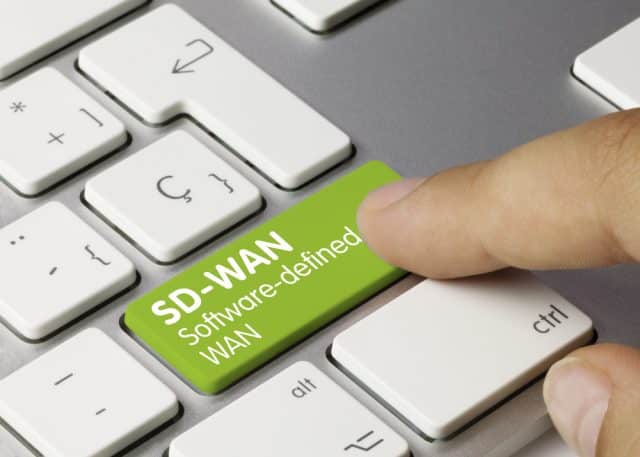The evolution of business connectivity waits for no one -- start your journey now!

When the COVID-19 pandemic emerged in early 2020, businesses around the world pivoted quickly to respond to an event that had the potential to disrupt or ruin their markets and business models. In a matter of weeks and months, they sent their employees home to work. Some business functions shifted to mobile apps, other business applications to the cloud. Enterprises embraced new communication tools and technologies to stay connected to their suppliers, partners, customers and workers, no matter where they were located around the world.
Every key shift in business operations relied on dependable, secure and often global connectivity. Today, as the post-pandemic picture comes into focus, a key question arises: Are businesses ready for what’s next?
When to start planning? Today
In order to manage the future of connectivity, large businesses and enterprises should take heed to explore the costs, complexity and manpower required to manage the future of global connectivity if they want to position themselves for success for their employees, partners, clients and customers.
The reality is that emerging, existing and on-the-horizon technologies and connectivity innovations have the potential to be just as disruptive — or promising -- for geolocated, growing and expanding businesses and enterprises.
Businesses typically rely on two underlying technologies to support connectivity across markets, regions, countries and continents:
- multiprotocol label switching (MPLS), a legacy networking service that enables companies to build, prioritize and privately manage their own networks using existing internet service providers
- software-defined wide area network (SD-WAN), a fast-growing application-aware service that enables companies to securely support, manage and optimize a variety of private applications and tools securely on any public or private network’s best routes, including an MPLS platform.
Which connectivity approach should they embrace so they are ready for the next step in the evolution of business connectivity?
Several new and emerging market realities should encourage enterprises to consider a shift from internally managed or MPLS networking services to SD-WAN connectivity. Among them:
- A growing internet market and audience. Nearly half of the world’s population does not currently access the internet, but further adoption of internet access will power global commerce as more of them come online. This shift also assumes an ever-expanding number of internet service providers in emerging markets and regions.
- Faster, better, more agile connectivity technologies and solutions, including ongoing roll-out of faster wireless 5G mobile networks, expanding local networks, fiber-to-the-building connections, satellite connectivity technologies, and more
- Highly centralized edge computing, marked by advanced computing powers that will shift more activity and secure decision-making back from the cloud
- Increased cloud security options for large enterprises, fueled by the growth of security service edge (SSE) services in the cloud for improved, secure internet access and ongoing availability of software-as-a-service (SaaS), cloud-computing and app-based work tools
- Global connectivity as a single experience, including platform-based insights into network service, deployments, outages, the best middle-mile and last-mile connections, and more
Making the case for SD-WAN
As the global internet becomes more complicated, dense and expansive, it behooves large and expanding business enterprises to build, manage and support connectivity from a centralized platform that is flexible and easy to configure as needs arise and change.
While MPLS has advantages for managing consistent, secure Internet and application performance, SD-WAN provides superior flexibility and adaptability in an ever-changing online environment. Advantages include:
- Ease of managing secure connections for employees in multiple locations. Whether they are in an office or working remotely, teams can access all of the collaboration tools and cloud-based technologies that support key business applications and activities (e.g., AWS, Salesforce, Office 365) -- services that previously were housed in-office.
- Ease of mixing and matching ideal internet partners and internet service providers. Businesses/enterprises that are expanding, merging or divesting that require cost-effectiveness and flexibility when merging and standardizing technologies and applications in every unique location/market.
- Ability for the underlying SD-WAN platform to host a global, end-to-end view of connectivity. Seeing the big picture informs decisions about managing staff and assigning connectivity’s costs to individual business sectors or divisions.
Act sooner than you think is necessary
Is there an optimal time to consider the switch from MPLS to SD-WAN? Consider this:
Large businesses typically decide they need a new or upgraded connectivity infrastructure only after they have realized how costly, time-consuming and complex it can be to manage internally. Procurement also poses a burden on daily operations and profitability of the core business.
In fact, it is not uncommon for large enterprises to require and manage 300-400 individual internet service providers to connect key stakeholders -- a task that can be dauntingly costly and complex without the expertise of network service providers.
Rather than being surprised or caught off-guard by connectivity’s complexity and costs, today’s enterprises should begin planning for SD-WAN now before challenges, obstacles or the next big surprise catch them off guard. Outsourcing procurement to a specialist like Expereo helps businesses begin their journey to SD-WAN connectivity in time to reap the benefits of transformation.
Image credit: Momius/ depositphotos

Sander Barens is Chief Product Officer at Expereo, a global networking service provider.
